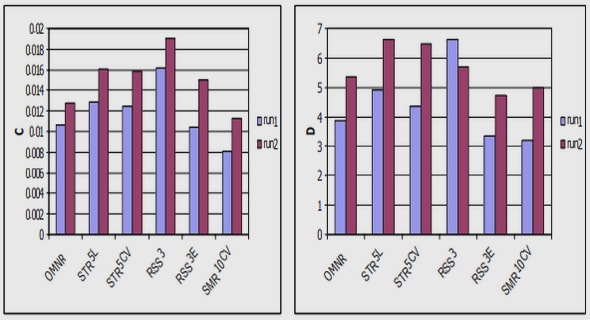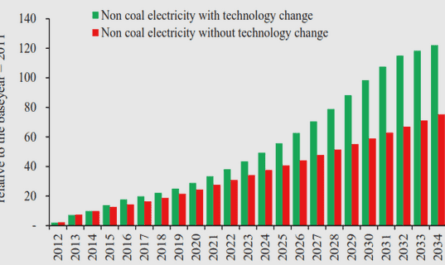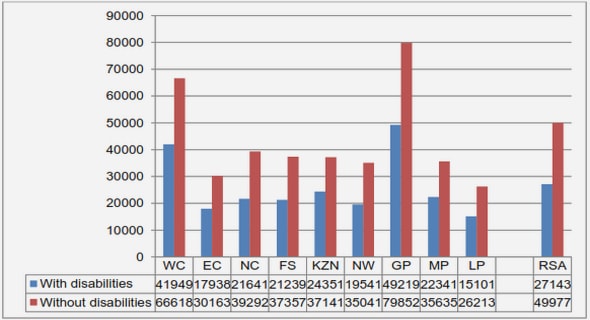Get Complete Project Material File(s) Now! »
Detection methods
Direct Imaging
This method is perhaps the most natural to apprehend, as it simply consists in measuring the light we directly receive from a planet. Its advantage is that it can, in principle, give accurate information about the orbit of the planet. Moreover the direct observation of the planetary spectrum gives access to its atmospheric composition. The improvement in adaptive optics technologies allows us, for near-by stars, to obtain an angular resolution high enough to resolve planetary systems. The main problem comes from the very high contrast between the luminous flux from the star and that of the planet, which results in the light of the latter often being hidden. Moreover, estimations of the planetary mass rely on the knowledge of the stellar age, and can be poorly constrained. So far, this method can account for the discovery of Jupiter-mass (and higher) planets with orbital separations of several tens or hundreds of astronomical units (AU1). In the very near future, the Gemini Planet Imager will achieve high contrast resolution, aiming at detecting gas giants with semi-major axes of 5-30 AU.
Transit Photometry
The principle behind the transit method is known for a long time in the Solar System. When an object passes between an observer and the Sun, the luminosity of the latter decreases. It is the principle of solar eclipses and Venus transits, for instance. The same principle can be applied to extrasolar planets. If the orbital plane of a planet is well aligned with the line of sight from the observer to the star, the former can measure a decrease in the light flux of the latter. This decrease is proportional to the surface ratio of the stellar and planetary discs, thus the square of the ratio of the radii. Therefore this method favours planets with large radii: a Jupiter-like planet around a Sun-like star will lead to a decrease of luminosity of about 1% in the light curve of the star. For an Earth-size planet the decrease will only be of 0.01%.
In addition, active bright stars will have proper luminosity variations, which can mimic a planetary transit. In addition to properly model the stellar activity, it is necessary to observe a large number of transits, which requires long-term follow-up for long-period planets. Moreover, other periodic phenomena, like a stellar companion with a grazing orbit, or an eclipsing binary in the field of view can produce the same signal as a transiting planet. Therefore, because of the limited lifetime of observational programs, only short-period planets can be easily detected (an observer outside our own Solar System will have to wait at least 12 years in order to observe 2 transits of Jupiter).
This technique gives access to the period of the planet, and to its radius. In addition, observing the transit at different wavelengths can tell us about the atmospheric composition of the planet. The first planet detected by transit was the hot Jupiter transiting HD 209458 (Henry et al., 2000; Charbonneau et al., 2000). Since then, this method has been successfully applied by ground-based telescopes such as SuperWASP, and by the space-based telescopes CoRoT and Kepler. Despite the small probability of observing a planet transiting around a given star, the large number of planets observed by these telescopes has allowed for the detection of a large number of planets.
Radial velocities
This is an indirect method for which we detect the planet through the gravitational influence it exerts on the star around which it gravitates. In a N-body system (here, the star and one or several planets), the motion of each body occurs around the centre of mass of the system. For the central star, this motion is small but detectable. Indeed the radial component of the stellar velocity will lead to a shift in the stellar spectrum: a blue shift if the star is coming toward the observer, or a red shift if it is going away from it. It is a direct application of the Doppler-Fizeau effect. This method (hereafter radial velocity method, or RV) led to the first detection of a planet around a main-sequence star, 51 Peg (Mayor and Queloz, 1995). It favours the detection of massive planets on short-period orbits.
It is also more efficient for low-mass, nearby, main-sequence stars. Indeed, low-mass stars will be more sensitive to the planet’s influence. Main-sequence stars will also tend to rotate slower than young active star, producing a clearer spectrum. A degeneracy exists because the inclination of the orbital plane with respect to the line of sight is not known. As a consequence the true mass Mp of the planet is unknown, only the the quantity Mp sin(io) can be measured, where io is the inclination of the orbital plane with respect to the plane of the sky. The degeneracy can be broken if the planet also transits the star, In this case io 90 and we get a very good estimation of the planetary mass.
For a single planet around a star of mass M , the semi-amplitude of the sinusoidal vari-ations is given by where G is the gravitational constant, and P and e are the orbital period and eccentricity of the planet, respectively. From this formula, it clearly appears that the RV method will be more sensitive to massive planets on short-period orbits. For a circular Jupiter-mass planet with orbital period of a year around a Sun-like star, the semi-amplitude variation of the RV curve is K = 28:4 m s1 . For an Earth-like planet with the same characteristics, it falls to 9 cm s1 . At the time of writing, spectrometer like HARPS at the ESO 3.6 meter telescope in La Silla Observatory, Chile, or HIRES at the Keck telescopes are reaching accuracy of about 1 m s1 and somewhat below. Next-generation spectrometers such as ESPRESSO (successor of HARPS) will aim to detect variations of 10 cm s1 and below, giving access to Earth-like planets in the habitable zone.
Astrometry
As we just saw, the presence of planets around a star leads to a small stellar motion which causes variations in the stellar spectrum. However it only gives access to the radial velocity component of the motion. The so-called astrometric measurement of a star tracks the motion of the star on the plane of the sky. Therefore two components of the motion are known and it breaks the degeneracy caused by the unknown orbital inclination with respect to the line of sight. Therefore it gives access to all the orbital parameters and the planetary mass. Con-trary to the transit or radial velocity method, the astrometric detection is more sensitive to massive planets far away from their star. At the moment, the transit and RV methods hardly reach this population of planets, and astrometric detections could represent an interesting complementary method. It is expected that the Gaia mission will detect some planets via this method.
Gravitational microlensing
The light from a distant star, as observed from Earth, can be magnified when another star passes in front of it. This is because the gravitational field from the foremost star acts like a lens when the two stars and the observer are exactly aligned. This effect is called gravi-tational microlensing. The gravitational field of an hypothetical planet around the foremost star will also contribute to the lensing. The method has proved successful for planets with large orbital separations around distant stars, and does not rely on the system being seen edge-on. Therefore it is a good complement to the transit and RV methods. The major drawback of this method relies in the uniqueness of the event. Because such events are also usually quite distant, it is hard to do follow-up observations with a more conventional method. It gives access to the physical distance between the star and the planet at the time of observation.
For an eccentric orbit, this distance could be quite different from the semi-major axis. The mass estimated with this method usually comes with large error bars. How-ever the occurrence of gravitational microlensing events could tell us about the abundance of planets around stars in our galaxy, as well as the abundance of free-floating planets. For instance, Cassan et al. (2012) have inferred from microlensing surveys that there could be as high as one or more bound planets per star in our Galaxy.
Transit Timing Variations
If a star is orbited by a single, non-perturbed planet, the frequency at which transits oc-curs remains constant. Irregularities in the periodicity of the transit occurrence (usually called transit timing variations, hereafter TTV) can reveal the presence of an unseen, non transiting companion. Notably, companions on orbits in mean motion resonance produce large-amplitude TTV. It can also give a good estimate on the mass and eccentricity of the unseen planet. It has proven useful in order to get more informations for a system containing at least one transiting planet, especially regarding the Kepler mission.
Other methods
Other methods exist, and are often used to confirm and constraint the previously mentioned methods (mainly RV and transits). Such methods usually rely on the variation of the bright-ness of the star as the planet orbits around it. They are only of marginal importance in the current arsenal of detection methods, and we shall only mention them: variation of the total brightness caused by the thermal emission of the reflected light of the planet, relativistic beaming effect which changes the density of photons, and ellipsoidal variations caused by massive planets tidally distorting their parent stars. In addition, a few methods will apply only in specific cases. This is the case of the pulsar timing method, used to discover the first exoplanet. However its range of applications being rather limited, we will not develop it further in the present work.
Table of contents :
1 Introduction
1.1 Historical overview
1.2 Problematic
1.3 Plan of the thesis
2 Extrasolar planets
2.1 Detection methods
2.1.1 Direct Imaging
2.1.2 Transit Photometry
2.1.3 Radial velocities
2.1.4 Astrometry
2.1.5 Gravitational microlensing
2.1.6 Transit Timing Variations
2.1.7 Other methods
2.1.8 The Rossiter-McLaughlin effect
2.2 The diversity of exoplanets
2.2.1 Period distribution
2.2.2 Mass distribution
2.2.3 Eccentricity distribution
2.2.4 Spin-orbit angle distribution
2.2.5 Multiple systems
2.2.6 Statistical properties of exoplanets
2.3 Planet Formation
2.3.1 The protostellar nebulae
2.3.2 Properties of protoplanetary discs
2.3.3 Grains and planetesimals formation
2.3.4 Rocky planets formation
2.3.5 Giant planets formation
2.4 Planet migration
2.4.1 Disc migration
2.4.2 Migration via scattering of planetesimals
2.4.3 High-eccentricity induced migration
3 Basics of celestial mechanics
3.1 The two-body problem
3.1.1 The planar case
3.1.2 Three-dimensional orbit
3.2 Perturbation theory
3.2.1 Keplerian orbits perturbed by an extra force
3.2.2 The disturbing function and Lagrange’s equations
3.2.3 Laplace-Lagrange theory of secular perturbations
3.2.4 Hierarchical systems and the Kozai mechanism
3.2.5 Resonant perturbations
3.2.6 Post-Newtonian perturbations
4 Interactions between an inclined planet and a disc
4.1 Planets on inclined orbits
4.2 The disc potential
4.2.1 The 2D case
4.2.2 The 3D case
4.3 Frictional forces
4.3.1 Aerodynamic drag
4.3.2 Dynamical Friction
4.3.3 Comparison of the two forces
4.4 Publication I – Orbital evolution of a planet on an inclined orbit interacting with a disc
4.5 Interplay between eccentricity and inclination
4.6 Systems of two planets
5 Resonant Migratin
5.1 Migration and the capture in resonance
5.1.1 Observational evidences
5.1.2 Disc–driven migration of two planets
5.2 Resonant migration and orbital evolution
5.2.1 Probability of capture in resonance
5.2.2 Physics of the resonant migration
5.2.3 Damping of the orbital elements by the disc
5.3 Publication II – Evolution of eccentricity and orbital inclination of migrating planets in 2:1 mean motion resonance
5.4 Complete solution in the case of strong eccentricity damping
6 Conclusions
6.1 Summary
6.2 Perspectives


